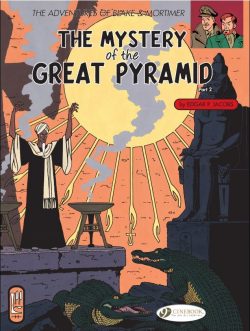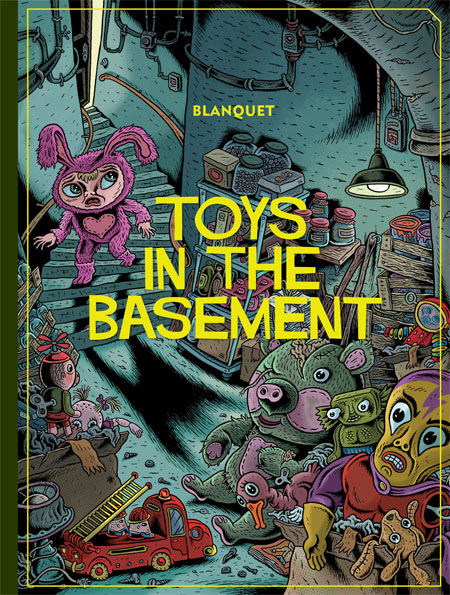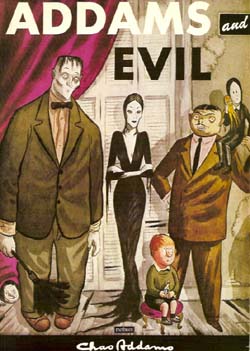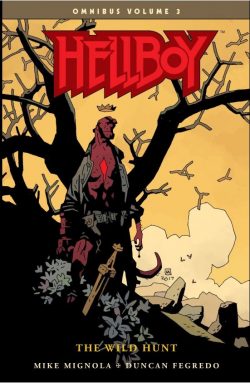

By Edgar P. Jacobs, translated by Clarence E. Holland & Erica Jeffrey (Cinebook)
ISBN: 978-1-905460-37-3 (Manethon TPB) 978-1-905460-38-0 (Horus TPB)
Master storyteller Edgar P. Jacobs pitted his distinguished duo of Scientific Adventurers Captain Francis Blake and Professor Philip Mortimer against a wide variety of perils and menaces in stunning action thrillers which merged science fiction, detective mysteries and supernatural thrillers in the same timeless Ligne Claire style which had done so much to make intrepid boy reporter Tintin a global sensation.
The strip debuted in Le Journal de Tintin #1 (26th September 1946): an anthology comic with editions in Belgium, France and Holland. The new weekly was edited by Hergé, with his eponymous star ably supplemented by a host of new heroes and features…
Brussels-born Edgar P. Jacobs was a prodigy who drew from an early age and was besotted by music and the performing arts – especially opera. Upon graduation from commercial school in 1919, he promptly rejected safe, steady office work and instead avidly pursued his artistic passions…
His dream of operatic glory was crushed by the Great Depression, and when arts funding dried up following the global stock-market crash he was forced to pick up whatever dramatic work was going, although this did include more singing and performing. He moved into illustration in 1940, with regular work for Bravo magazine and some jobs for short stories and novels and, when the occupying Nazi authorities in Belgium banned Alex Raymond’s quintessentially All-American Hero Flash Gordon, Jacobs famously took over the syndicated strip to complete the saga.
His Stormer Gordon lasted less than a month before being similarly embargoed by the Occupation dictators, after which the man of many talents simply created his own epic science-fantasy feature in the legendary Le Rayon U, a milestone in both Belgian comics and science fiction adventure.
At this time, Jacobs and Tintin creator Hergé got together, and whilst creating the weekly U Ray strip the younger man began assisting on Tintin, colouring original monochrome strips from The Shooting Star (originally run in newspaper Le Soir) for an upcoming album collection.
By 1944 Jacobs was performing similar duties on Tintin in the Congo, Tintin in America, King Ottokar’s Sceptre and The Blue Lotus. He was contributing to the drawing too, working on extended epic The Seven Crystal Balls/Prisoners of the Sun.
Following the Liberation, publisher Raymond Leblanc convinced Hergé, Jacobs and a few other comics masters to work for his bold new venture: publishing house Le Lombard, and Le Journal de Tintin. Beside Hergé, Jacobs and writer Jacques van Melkebeke, the weekly featured Paul Cuvelier’s Corentin and Jacques Laudy’s The Legend of the Four Aymon Brothers.
Laudy had been a friend of Jacobs’ since their time together on Bravo, and ‘Le secret de l’Espadon’ starred English Military Intelligence officer Blake, closely modelled on him. The debonair spy was to be partnered with a bluff, gruff, excitable British boffin…
The serial ran from issue #1 for three years, cementing Jacobs’ status as a star in his own right. In 1950, with the first 18 pages slightly redrawn, The Secret of the Swordfish became Le Lombard’s first album release with the concluding part published in 1953. The volumes were reprinted nine more times between 1955 and 1982, supplemented in 1964 by a single omnibus edition.
Chronologically, the next epic was this eerily exotic thriller which originally ran in Le Journal de Tintin as Le Mystère de la Grande Pyramide from March 23rd 1950 to February 21st 1951.
The ongoing adventures resume in the months following the defeat of Tibetan warlord Basam-Damdu and liberation of the planet from his monomaniacal tyranny…
Available in paperback album form and in digital editions and subtitled ‘The Papyrus of Manethon’ – The Mystery of the Great Pyramid Part 1 opens with the author’s fascinating and pertinent illustrated Foreword on everything Anciently Egyptian – complete with extremely handy maps and plans – before the story proper begins with fretful Professor Mortimer taking some time off to pursue his occasional hobby.
A keen amateur archaeologist, the war-weary big brain has flown to Cairo with devoted assistant Ahmed Nasir for a holiday …and to help Egyptologist Ahmed Rassim Bey translate an astounding new find.
However, as they debark at the airport, the vigilant Indian thinks he spots an old enemy…
When no sign can be found the travellers move on, and the following morning Mortimer is examining some fragile scraps of papyrus attributed to legendary contemporary archivist Manethon. The ancient priest’s writings indicate that a secret treasure is hidden beneath a certain pyramid in a “Chamber of Horusâ€â€¦
Cautious of the effect of such a sensationalistic discovery, the historians decide to proceed carefully, blithely unaware that trusted assistant Abdul Ben Zaim is in the employ of a cruel and dangerous enemy…
Even after an evening of socialising, the learned men are keen to get to work. Returning late to the laboratory of the Egyptian Museum, they discover Abdul furtively loitering and Mortimer’s suspicions are aroused. When nobody is watching, the physicist craftily secures a portion of the papyrus and talks Ahmed into conducting a clandestine test…
Abdul is indeed playing a double game and his mysterious master is a man both subtle and exceedingly dangerous. That night the hidden leader tries to steal the documents, but is surprised by Mortimer who has anticipated such a move. The canny scientist is just as surprised when the villain is exposed as treacherous Colonel Olrik.
The wily war criminal has been missing since the fall of Basam-Damdu, but has lost none of his lethal skills. Overpowering Mortimer, the rogue escapes, taking with him the last shred of papyrus the Professor had been holding…
Safe in his lair, Olrik presses Abdul, who hastily translates the assembled fragments and declares the Chamber of Horus must be in the Great Sphinx on the Giza Plateau…
Under constant surveillance by Olrik’s gang, Mortimer and Nasir warily go about their business, hoping to lure the mastermind out of hiding. Meanwhile Abdul, believing himself undiscovered, returns to work at the museum, where flashy German Egyptologist Herr Doktor Grossgrabenstein is loudly informing all and sundry of his latest search for the tomb of Tanitkara.
The bombastic treasure-hunter invites Mortimer to visit him and view his unique collection but the boffin is too absorbed with shadowing Abdul – a task made far harder by the inept assistance of the local police.
When a lucky clue leads the resolute researcher to an antique store, Olrik’s scurrilous henchman Basendjas ambushes and imprisons Mortimer in the basement, but after a tremendous, extended battle the doughty doctor breaks free and calls in the cops.
Sadly, even on the defensive, Olrik is formidable and fights free of the encroaching authorities before vanishing into the warrens of the city. After Abdul is killed in a hit-and-run incident, effusive Grossgrabenstein is present when Mortimer admits defeat and calls in a seasoned professional…
In London, Captain Francis Blake receives a cablegram and takes a leave from desk duty at I.S. Scotland Yard’s international security division is already investigating a surge of criminal activity in Northeast Africa and is happy to have their top man take a personal interest.
Blake heads out to Egypt by devious and complex means but, despite his circuitous route and customary caution, does not make it. Mortimer becomes increasingly impatient as he awaits the espionage expert’s arrival and to kill time finally accedes to his German colleague’s repeated requests to visit his dig at Giza.
When he arrives, Mortimer finds bullying foreman Sharkey whipping native workers and is just in time to thrash the brute as he tries to attack an old Holy Man who has objected…
The enraged thug pulls a gun, but is admonished by Grossgrabenstein, who then reluctantly allows the Professor to inspect the recently-cleared chambers below the pyramid.
As Mortimer climbs back to the surface, a hasty, anonymous cry alerts him and he narrowly dodges a huge rock which crashes into the space where he stood. The area it fell from is empty and nobody recognises the voice which called out…
Making his way back to his hotel, the weary scientist is then metaphorically crushed to receive news that his best friend has been shot to death in a phone booth at Athens airport…
Bitter and enraged, Mortimer swears to make Olrik pay…
To Be Concluded…
‘The Chamber of Horus’ concludes Le Mystère de la Grande Pyramide after a brief summary of past events.
With his great friend murdered, Mortimer is resolved to finish the case himself and begins by visiting decidedly odd and off-kilter Doktor Grossgrabenstein in his mansion. He hasn’t made up his mind about the German, but the archaeologist’s staff – especially thuggish foreman Sharkey – are definitely playing some deeper game…
The visit almost ends in disaster, but once again a mysterious warning – in Egyptian – tips Mortimer off and he leaves before the gang can grab him. Later that night, he meets again the aged holy man Sheik Abdel Razek which results in the enigmatic cleric giving him a strange talisman and a warning of the arcane forces he faces. Rationalist sceptic though he is, the physicist keeps the artefact near and that night, when another vicious attempt is made on his life, the charm proves its worth…
Instructing Nasir to make discreet inquiries, Mortimer returns to the Giza excavation, unaware that he has picked up a silent shadow. A commotion then brings him to Razek’s dwelling where Sharkey is threatening the old man. Before the Professor can intervene, the bully is sent scurrying by a shocking display of spooky pyrotechnics…
The house is incredibly ancient, built from reclaimed materials, and as he chats with the sheik, Mortimer sees glyphs and symbols etched into the walls which can only have come from the original pyramids. Razek is charmingly evasive however, and Mortimer eventually leaves, but on his way back sees figures lurking around Grossgrabenstein’s work site.
Although he loses them, the subsequent chase gives him an opportunity to inspect the tunnels under the tomb. Further investigation is cut short when he clashes with native worker Abbas whom he suspects has been following him…
Things take a dangerous turn the next night when he returns to the German’s grand home. A sudden slip by Grossgrabenstein tips off Mortimer that the boisterous historian has at some stage been replaced by gifted mimic Olrik. After a mighty struggle, the Professor is captured and before long Nasir too is bundled into the opulent cell the Prof has been dumped in…
Their bacon is saved by the unexpected arrival of the police, who storm the mansion with guns blazing. In the confusion a beloved old comrade resurfaces as Francis Blake sheds his own disguise to rescue his beleaguered friends.
When the gunfire subsides, the triumphant police attempt to arrest the real Grossgrabenstein. As they blunder around, slippery Olrik again escapes…
With all nefarious opposition seemingly routed, Blake and Mortimer are free to concentrate on solving the mystery of the Chamber of Horus and why ultra-modern super-criminal Olrik was so obsessed by it. Soon they are carefully exploring the claustrophobic tunnels beneath the Great Pyramid and eventually discover not only the incredible treasures of the pharaohs but their old arch-foe plundering the sacrosanct horde.
Olrik is as hard-headed and no-nonsense as his British adversaries and puts no faith in curses, talismans or magic, but the sudden arrival of Razek teaches all of the western sceptics and heretics a lesson they will never forget… before carefully erasing their memories to protect the secrets his line has spent millennia protecting…
Suspenseful and fantastic in the grandest tradition of epic intrigue, Blake & Mortimer are the very epitome of dogged heroic determination and graphic personifications of the Bulldog Spirit: worthy successors to Sherlock Holmes, Allan Quatermain, Professor Challenger, Richard Hannay and all the other valiant stalwarts of lost Albion …and decent chaps proudly participating in the grand international alliance against insular ignorance and wickedness.
This saga delivers splendid Blood-&-Thunder thrills and spills in timeless fashion and with breathtaking visual punch. Every kid of any age able to suspend modern mores and cultural disbelief can’t help but revel in the adventure of their lives… and so will you.
Original editions © Editions Blake & Mortimer/Studio Jacobs (Dargaud – Lombard s.a.). © 1986, 1987 by E.P. Jacobs. All rights reserved. English translation © 2007, 2008 Cinebook














